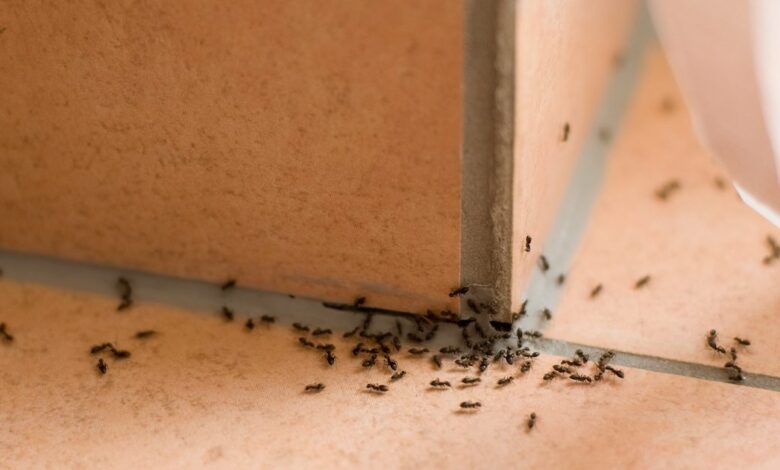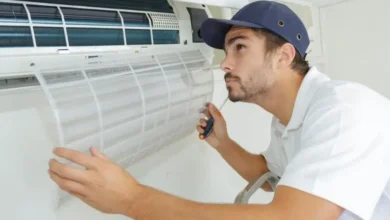Professional Ant Extermination Services Tailored to Your Home’s Unique Needs

Ant infestations can be more than just an inconvenience. These small, persistent creatures can quickly take over a home, causing damage, health concerns, and overall frustration. In such situations, professional ant extermination services offer a strategic, personalized solution to remove the pests and prevent future invasions.
Professional services ensure a thorough and lasting solution, from identifying the species causing the problem to understanding the architectural layout and environmental conditions of your home.
The Importance of Professional Ant Extermination
Before we dive into how exterminators customize their services, it’s important to understand why professional ant extermination is crucial for a long-term solution. While over-the-counter treatments may seem convenient, they often fail to address the root cause of the infestation. Without an expert’s insight, homeowners may unknowingly apply ineffective methods or miss vital signs of a larger issue.
How Professional Ant Exterminators Tailor Their Approach
1. Identifying the Ant Species
One key factor in successful ant extermination is accurately identifying the species of ants invading your home. Different species require different approaches. For instance, carpenter ants can damage your home’s structural wood, while fire ants can present health hazards due to their painful stings. Professional ant exterminators in Woodbridge are trained to recognize the subtle differences between various species.
2. Understanding Your Home’s Environment
Every home is unique, and the same is true for its susceptibility to ant extermination in Woodbridge. Professional ant exterminators take the time to assess your home’s structure and environment before applying any treatments. This includes:
- Assessing Entry Points: Ants may enter through tiny cracks, vents, or even pipes. An expert will identify where ants are entering your home and target those areas directly.
- Evaluating Interior Conditions: Factors such as humidity levels, food availability, and cleanliness play a role in attracting ants. Exterminators consider these elements to ensure that treatment strategies address not just the ants themselves but the conditions that led to the infestation.
- Long-Term Prevention: After treating the existing infestation, professionals will also look for ways to prevent future issues. This might involve recommending sealing gaps, adjusting the landscaping, or offering advice on cleaning practices.
3. Customizing Treatment Methods
Once the species and environment are evaluated, a customized treatment plan is developed. This plan will take into account the severity of the infestation, the type of ant involved, and the best methods for dealing with it. Common approaches include:
- Baiting Systems: Professional exterminators often use baiting systems for persistent species. These systems are designed to attract ants, which carry the poison back to the nest, eliminating the entire colony.
- Insecticide Applications: In some cases, insecticides may be used around entry points, along walls, or in other areas where ants have been detected. The goal is to target the source of the infestation.
- Eco-Friendly Solutions: Many exterminators offer eco-friendly options for homeowners who are concerned about chemical treatments. These options are safe for pets and children while still effectively dealing with ants.
4. Providing Ongoing Monitoring and Support
Professional and extermination services do not end after the initial treatment. These experts often provide ongoing monitoring to ensure that the problem does not resurface. Some companies offer periodic follow-up visits, reapply treatments, or make adjustments as necessary to ensure that ants do not return.
This proactive approach to ant control is essential for long-term results. Ants can be stubborn, and a single round of treatment may not be enough to completely eradicate them. With regular follow-ups and monitoring, professionals ensure that your home remains ant-free.
5. Educating Homeowners on Prevention Techniques
Another important aspect of professional ant extermination is education. Exterminators don’t just treat the current problem; they also provide homeowners with the knowledge to prevent future infestations. This may include advice on:
- Sealing Entry Points: Simple steps, such as caulking gaps in windows or doors, can help prevent ants from entering your home.
- Food Storage Practices: Ants are attracted to food. Sealing and cleaning up food is one of the most effective ways to deter them.
- Moisture Control: Since some species of ants are attracted to damp environments, managing moisture around your home can greatly reduce the likelihood of an infestation.
Conclusion
When it comes to ant extermination, a one-size-fits-all approach is rarely effective. Professional ant exterminators in Woodbridge provide customized services that are specifically designed to meet the unique needs of your home. By considering the species, environmental factors, and entry points, exterminators can develop a tailored plan that ensures thorough, long-lasting results. With ongoing support and prevention advice, you can rest assured that your home will remain ant-free for the long term.
Frequently Asked Questions
1. How do I know if I have an ant infestation in my home?
Common signs of an ant infestation include trails of ants, especially around food or moisture sources, and nests in hidden places like walls or under floors.
2. Are professional ant extermination services safe for my family and pets?
Yes! Professional exterminators offer eco-friendly and safe treatments, especially for families with pets or small children. You can discuss your concerns with your exterminator to ensure the chosen method is safe for your household.
3. How long does it take for professional ant extermination to work?
In many cases, you will begin to see results within a few days, but a complete resolution may take a few weeks. Follow-up visits ensure lasting results.
4. Can I prevent ant infestations on my own?
Yes, sealing entry points, maintaining cleanliness, and addressing moisture issues can reduce the risk of an infestation. However, for significant infestations, professional help is usually necessary for effective eradication.




